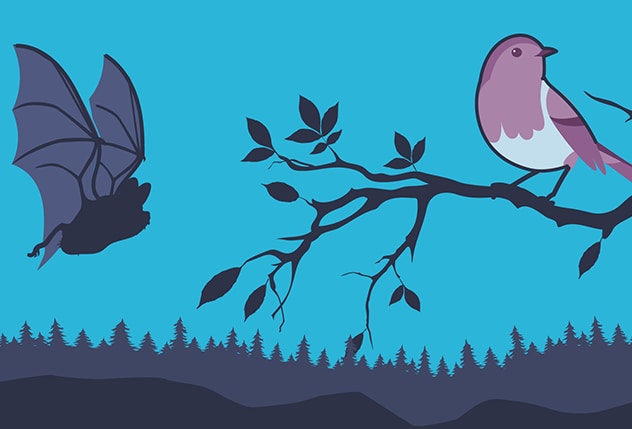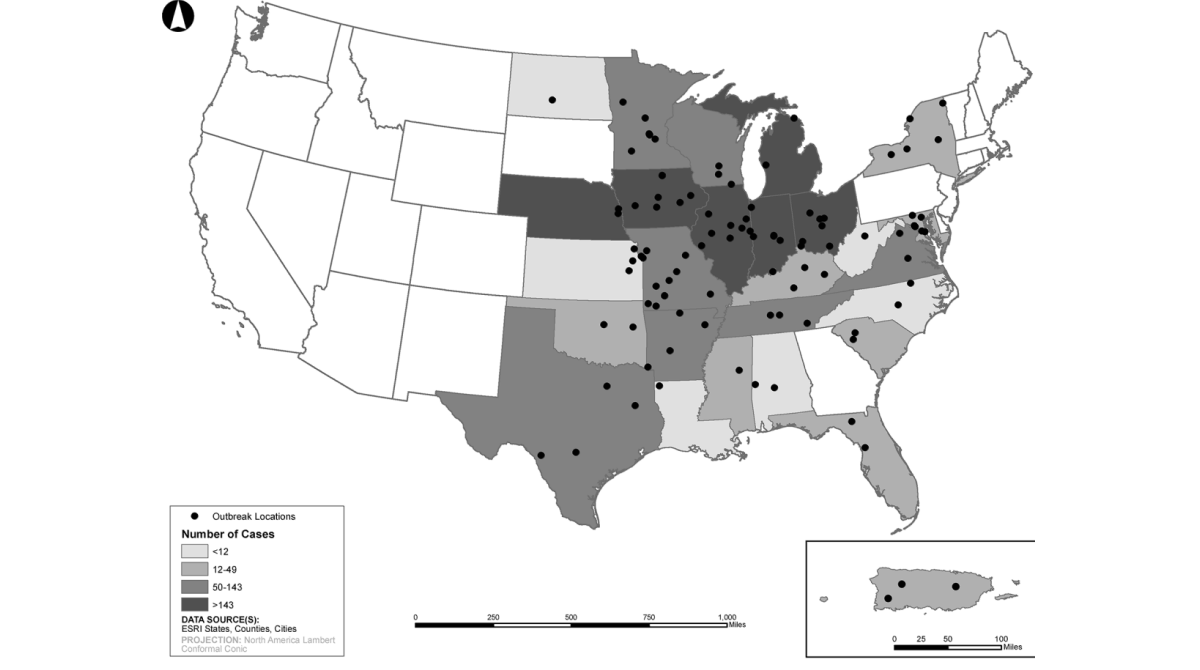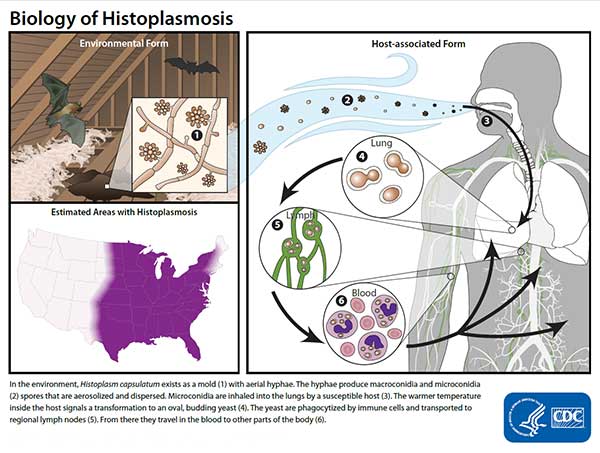Key points
- Histoplasmosis is a lung infection caused by breathing in spores from the fungus, Histoplasma.
- Histoplasma lives in soil in certain parts of the U.S. and the world.
- It cannot spread between people or between people and pets.
- Outbreaks of histoplasmosis are rare and do not cause many cases.

How it spreads
People can get histoplasmosis by breathing in spores from the fungus, Histoplasma. The fungus is typically found in soil and bird or bat droppings in certain areas of the United States and the world.
Histoplasma spores are released in the air after contaminated soil is disturbed. The spores are too small to see without a microscope. When people breathe in the spores, they are at risk for developing histoplasmosis. After the spores enter the lungs, the person's body temperature allows the spores to transform into yeast. The yeast can then travel to lymph nodes and can spread to other parts of the body through the bloodstream.
Histoplasmosis outbreaks

Outbreaks of histoplasmosis are not common. Of the few that have been reported, most occurred after events that disturb soil contaminated with bird or bat droppings. From 1938–2013, there were 105 reported outbreaks of histoplasmosis. The number of outbreak-related cases are reported by state or territorial health departments.
Some of these outbreaks happened in places where scientists did not expect Histoplasma to live. Investigating histoplasmosis outbreaks helps public health officials understand:
- Where the fungus lives.
- Activities that may make someone more likely to get histoplasmosis.
- Groups of people more likely to get histoplasmosis.
- Manos NE, Ferebee SH, Kerschbaum WF. Geographic variation in the prevalence of histoplasmin sensitivity. Dis Chest. 1956 Jun;29(6):649-68.
- CDC. Histoplasmosis in a state where it is not known to be endemic–Montana, 2012-2013. MMWR Morb Mortal Wkly Rep. 2013 Oct 25;62(42):834-7.
- Colombo AL, Tobon A, Restrepo A, Queiroz-Telles F, Nucci M. Epidemiology of endemic systemic fungal infections in Latin America. Med Mycol. 2011 Nov;49(8):785-98.
- Loulergue P, Bastides F, Baudouin V, Chandenier J, Mariani-Kurkdjian P, Dupont B, et al. Literature review and case histories of Histoplasma capsulatum duboisii infections in HIV-infected patients. Emerg Infect Dis. 2007 Nov;13(11):1647-52.
- Chakrabarti A, Slavin MA. Endemic fungal infections in the Asia-Pacific region. Med Mycol. 2011 May;49(4):337-44.
- McLeod DS, Mortimer RH, Perry-Keene DA, Allworth A, Woods ML, Perry-Keene J, et al. Histoplasmosis in Australia: report of 16 cases and literature review. Medicine. 2011 Jan;90(1):61-8.
- DiSalvo A. The role of bats in the ecology of Histoplasma capsulatum. In: Ajello L CE, Furcolow ML, editors. Histoplasmosis: proceedings of the second national conference; 1971; Springfield, IL; 1971. p. 149–61.

